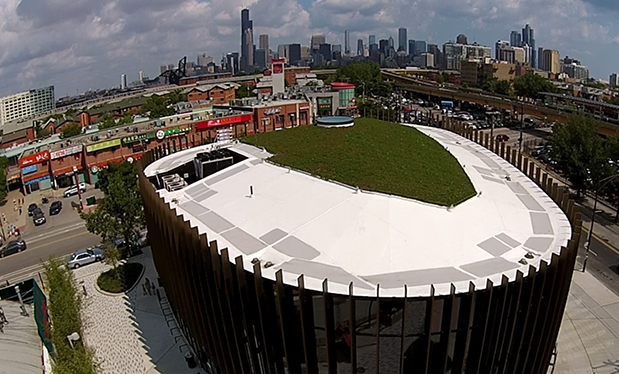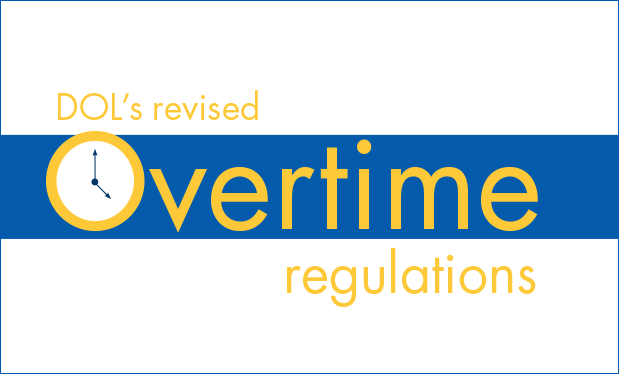At its March 7 meeting, the Denver City Council voted unanimously to adopt new building codes for the city's metropolitan area. The new codes are based on the International Code Council's (ICC's) 2015 model codes, which are recognized as models for achieving state-of-the-art safety and energy efficiency in building construction. ICC updates the codes every three years, and they have become the standard for thousands of municipalities worldwide.
During the same meeting, the Denver City Council also approved a package of amendments to the ICC's model codes that reflect the specific requirements and climate of the Denver area. As adopted, the code amendments cover a wide variety of situations from requiring new homes be wired to support charging an electric car to standards for inspection of facilities that are growing Colorado's newly legal marijuana crop. (Each year, more than 75,000 building permits are issued in Denver, and each one must meet the specifics of the building codes.) The March vote of the city council was the culmination of an 18-month process to review the new codes, as well as the 170 amendments proposed to modify them.
With the adoption of the 2016 Denver Building Code, the city will be in a transition period until the new code's effective date: Sept. 12. Before Sept. 12, customers may apply for building permits under the 2011 code or the 2016 code. On Sept. 12 and after, customers must adhere to the 2016 code unless given prior approval.
But the final code did not include one of the amendments in the energy code portion that was of significant interest to the roofing industry.
The "cool roof" proposal
The process of considering and reviewing the proposed amendments was overseen by Denver's city planning board, Denver Community Planning and Development, on behalf of the Building Code Review Committee. Brad Buchanan, the board's executive director, called it "an open and collaborative review process," soliciting the views of "design and construction professionals, property owners and code officials" to reach consensus on standards that "will serve us well for years to come."
As part of its role in managing the process, Denver Community Planning and Development received a proposed amendment from the U.S. Green Building Council's Colorado Chapter and the Global Cool Cities Alliance in early 2015 to "require that new low-sloped roofs … have a minimum aged solar reflectance index of 64. This proposal is intended to accelerate the deployment of highly reflective, 'cool' roofs to improve Denver's capacity to address climate change without increasing costs."
In other words, according to the requirements of the proposed amendment, all new low-slope roofs on commercial buildings would have to be highly reflective surfaces. The amendment stated: "Using cool roofs to increase the solar reflectance of urban surfaces will help the City and County of Denver reduce greenhouse gas emissions by increasing the energy efficiency of Denver's new buildings and combat Denver's urban heat island."
The proposal was submitted in January 2015 and scheduled for consideration and comment during the public hearing March 20, 2015. Before that meeting, the EPDM Roofing Association (ERA) was alerted to the pending proposal by a tracking service the organization uses. ERA members make white and black roof membranes and have a long history of working to ensure their products are used appropriately in a variety of climates.
"Given the climate conditions in Denver and its location in ASHRAE Climate Zone 5, ERA members were opposed to any action that would require white roofs in the metropolitan area," says Ellen Thorp, ERA's associate executive director.
The International Energy Conservation Code already requires reflective roofs in Climate Zones 1-3. Extending the requirement to Climate Zone 5 was the point of contention.
The opposition begins
ERA reached out to Denver-based architects, roof consultants, roofing contractors, construction specifiers, building owners and professional associations who represent the construction industry. Its goal was to assemble an ad-hoc coalition to oppose the proposed amendment.
The resulting coalition, which was significantly supported by members of the Colorado Roofing Association (CRA), focused its efforts to defeat the amendment via two related activities: a letter-writing campaign to Denver Community Planning and Development and in-person testimony at the Building Code Review Committee meeting March 20, 2015.
ERA's letter to the Building Code Review Committee noted:
- A roof system is more than just the top layer of a membrane. Its assembly is complex and consists of many parts, including the substrate, deck, insulation, air barrier, vapor retarder and top layer. All these affect a building's energy efficiency, and it is shortsighted to try and address energy efficiency through one component.
- Contrary to what is stated in the amendment's proposal, the requirement for reflective or white roofing could, in fact, increase costs. Dark EPDM membranes have life spans of more than 30 years. There is not sufficient published evidence indicating white products will have the same longevity, requiring them to be replaced much sooner than a black roof on a comparable building.
- The proposal omits the well-documented issue of condensation under white roofs in northern climates and the issue of investigating and providing solutions for equivalent moisture vapor control on white roofs.
- The amendment proposal claims energy cost savings are high with a white roof (1 cent to 4 cents per square foot per year) yet omits the cost to clean a reflective roof to keep it at the same level of reflectivity as when it is new.
In lending its weight to the effort, CRA encouraged its members to write to the Building Code Review Committee.
CRA wrote to the Building Code Review Committee on behalf of the association, asking the committee to reject the proposed amendment. Then CRA President Brad Evans pointed out his organization represents contractors who collectively install more than 95 percent of the roofs on commercial buildings in Denver.
"Our members advise building owners on the best sort of roofs for their buildings, which varies depending on many different factors, including building usage, occupancy, orientation, location, life service, life cycle and sustainability," Evans wrote. "Our members have seen roofs that last for 40 years, and they have seen roofs last for 10 years. They are experts in this field."
Evans also noted the proposed amendment would prevent CRA members from using the full range of their expertise when serving their customers and the public.
In his letter, Evans explained how a roof assembly decision is complex and stated: "This argument is about whether we want roofing contractors to be able to advise building owners or facility managers on the roof that works best for their buildings or whether we want code officials to restrict our product offerings."
Field reports
The arguments against the proposed amendments from ERA, CRA and their coalition colleagues were based largely on scientific data generated in research environments. At the meeting of the code committee, this science-based information was amplified by observations derived from years of experience in the field.
Sean Beckham, project manager and estimator for Flynn Southwest LP (formerly known as D&D Roofing), Commerce City, Colo., has spent more than a decade working in the Denver area on major construction projects. Based on his experience, he pointed out the Denver area is especially challenging because of varying weather conditions, including hail, high winds, snow and extreme heat.
In addition, Beckham says Denver has more "heating days," meaning a white roof would increase heating costs in the Denver area more than it would decrease cooling costs. As for reduction in the reflectivity and related efficacy of white roofs, Beckham and his colleagues have invested in a drone to photograph white roofs one and two years into their service. He says the reduction in reflectivity is clearly visible as membranes become faded and dirty and this aspect was not considered in the proposed amendment.
Kade Gromoski, a forensic engineer at Pie Consulting and Engineering, Arvada, Colo., also helped author a letter to the code committee and testified at the hearing.
In a conversation after the Denver City Council's vote on the package of amendments, she said upon hearing about the proposed "cool roof" amendment her first thought was: "This isn't the right thing for Colorado."
As for the amendment or any move to require the use of one color of roof membrane in the Denver area, she said: "I don't understand why they are trying to tie our hands … there are a lot of requirements that go into designing a roof, not just energy efficiency."
In her role as a forensic engineer, she has seen the problems that occur when white roofs are installed in climates that are too cold.
"It predominantly has to do with the way white roofs respond to winter," she says. "White roofs don't get a lot warmer than the ambient air, so they often are below the dew point in the winter … you can get condensation forming in a roof, so basically the roof rains into a building."
Many of those involved in the effort to defeat the "cool roof" amendment emphasized they shared the goals of the white roof advocates: They both want to save energy.
Gromoski emphasizes: "I recognize the heat island effect is an important issue, and it's important we address it. But I would stress there are other ways to address the heat island effect than white roofing. If they are mandating you install a cool roof, that's a different thing than installing a white roof."
Gromoski adds ballasted roof systems can be an especially effective way to achieve energy savings and, in fact, are "cool" roofs.
As Beckham puts it: "A design professional knows there are many ways to achieve energy efficiency, but environmental advocates tend to look at only one overly simplified solution."
Verdict
CRA praised the decision of the Denver City Council to defeat the proposed amendment.
"We were pleased with Denver City Council's decision not to adopt section C402.3 of the ICC codes with regard to a white roof requirement," says CRA President Ray Phillips. "Our region of the country and proximity to the Rocky Mountains presents our local roofing professionals with unique and sometimes challenging considerations to make when selecting roof systems. New roofs are best specified on a case-by-case basis for the individual building on which they are installed. We believe the City of Denver made the correct decision to leave the complex choice of selecting the right roof system and product in the hands of the building owner, roofing contractor and design professionals."
For Thorp, the defeat of the cool roof amendment in Denver was a victory for building owners.
"Our members are roofing experts and want to design roof systems that fit the needs of each unique customer," she explains. "That means we will keep working to ensure we can use all the elements of a roof system to create an energy-efficient design and not be limited by a building code that would force us to deliver less than optimum results for our customers."
Louisa Hart is director of communications for the EPDM Roofing Association, Washington, D.C.
The Denver Coalition
The following organizations were part of the coalition to defeat the amendment:
- Asphalt Roofing Manufacturers Association
- Carlisle SynTec Systems, Carlisle, Pa.
- Colorado Roofing Association
- EPDM Roofing Association
- Firestone Building Products Co., Indianapolis
- Flynn Southwest LP, Commerce City, Colo.
- Johns Manville, Denver
- McReynolds Consulting, Golden, Colo.
- Pie Consulting and Engineering, Arvada, Colo.
- RCI Inc.'s Denver chapter



